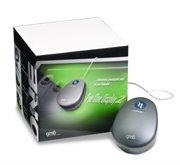
Most photographers I help with color are at remote locations. So I use the phone, Skype and email to interact with them, and above all, I try to recommend easy to use solutions.
With ease of use first in mind, I'm liking the Eyeone Display 2 package a lot these days. It's easy to buy, easy to use, and I can point clients at a very nice web video which explains what it's all about. Every Eyeone system buyer should watch the video.
There's another thing I like about the Eyeone, and that's the white ambient light shoe which acts as protection. I've an Eyeone in my travel bag, and don't want the sensor side damaged. Now, I did suggest to Gretag that they add a cheap pouch and sell it in a bubble pack, so that buyers would get the "buy it for the office, use it at home" idea, but as with most of my suggestions it fell on deaf ears. Hey folks, it was a suggestion, not a criticism !
With ease of use first in mind, I'm liking the Eyeone Display 2 package a lot these days. It's easy to buy, easy to use, and I can point clients at a very nice web video which explains what it's all about. Every Eyeone system buyer should watch the video.
There's another thing I like about the Eyeone, and that's the white ambient light shoe which acts as protection. I've an Eyeone in my travel bag, and don't want the sensor side damaged. Now, I did suggest to Gretag that they add a cheap pouch and sell it in a bubble pack, so that buyers would get the "buy it for the office, use it at home" idea, but as with most of my suggestions it fell on deaf ears. Hey folks, it was a suggestion, not a criticism !


